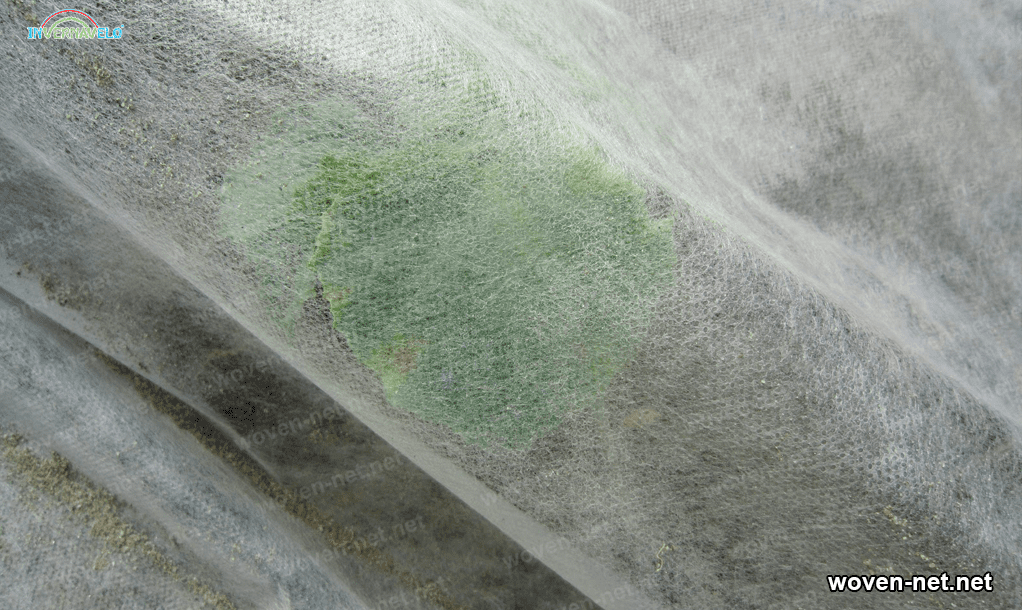The benefits of woven netting for vine cultivation are undeniable. First of all, this mesh offers protection against the cold, preventing land from being damaged by unusually severe frosts. This means that growers can obtain better harvests each year, maximizing their long-term income. Moreover, the netting also protects crops from runoff, keeping the soil moist and the nutrients essential for a healthy crop. The netting allows rainwater to fall freely on the soil, but retains it so that it is better absorbed by the crops. In addition, woven netting is an ecologically friendly alternative, as it is a clean way to reduce soil erosion. This is because the netting acts as a barrier between the soil and the wind, preventing the soil from being worn away by the constant friction of the air.
Finally, it stabilizes the soil, preventing valuable nutrients for the proper development of crops from being lost with rainwater. This ecological barrier has enabled many farmers to counteract the effects of extreme weather and obtain better harvests. The woven mesh represents a revolution in the agricultural sector. Not only is it a viable ecological and economical alternative for farmers, but it also offers a great harvest every year. This means that farmers have the opportunity to increase their profits, increase profit margins and increase wine production. Finally, frost-proof woven netting has allowed many farmers to have greater sustainability in the future. The woven wire mesh allows the plants to take in the right amount of light and ensures that the soil does not immediately recover. It also prevents insects and animals from damaging the grape vine while allowing air to circulate properly.
The installation of a frost netting for grapevine crops is quite simple
First, it is necessary to mark the plot with white lines to indicate the areas to be protected. These lines should connect the different posts around the plot. Once the lines have been marked, you start installing the wire on the outside of the plot. To do this, tie one end of the wire to one of the stakes and pass it to the other stake, making sure that the stakes are firm. Then, straps should be passed through the holes in each stake on both sides of the plot to give the support greater strength. Once this is done, the mesh is placed over the wire with a ladder, taking the mesh between your hands and passing it through the wire to root it easily.
The installation ends with the placement of the clamps to hold the mesh to the wire. These clamps must be strong enough to withstand wind and sunlight. Once the mesh is installed, it is important to keep it clean and free of foreign elements. This can be done by manually wiping the mesh with a damp cloth. After each growing season, it is advisable to inspect the screen to make sure it is in perfect condition. This includes removing weeds and plants growing around the posts, replacing deteriorated wires and reinforcing the brackets if necessary. Woven frost protection netting for vine crops is an excellent way to keep the plot safe from frost during the winter. If properly installed and maintained, you can enjoy a bountiful harvest of high quality grapes.
Vine cultivation in Mexico with woven netting
Vine cultivation in Mexico has become increasingly important, as it has been part of the national culture for centuries. It is the basis for the consumption of a variety of alcoholic beverages, such as wine, mezcal, pulque and brandy. It is a key element in the economy of many regions of Mexico, generating employment in rural areas and boosting gastronomic tourism. Statistics on vine cultivation in Mexico show the magnitude of this agricultural sector. According to data from the National Institute of Statistics and Geography (INEGI), in 2019 Mexico had 6,137 hectares of land to grow grapevines. This area was distributed in 16 different states, led by Baja California with 1,944 hectares, followed by Jalisco with 1,781 hectares, Michoacán with 695 hectares, Querétaro with 519 hectares and Oaxaca with 480 hectares.
Of the total land dedicated to vine cultivation in Mexico, 40.7% corresponds to irrigated land, and the rest to non-irrigated land. Of the remaining 60.3%, 37% is under semi-arid conditions, 20.3% in hillside areas and 2.2% in warm zones. In addition, about 75% of the land is planted with imported clonal vines, followed by native vines (17.6%), mixed vines (3.3%) and foreign vines (3.1%). The level of productivity per hectare in Mexico is three tons per year for irregular soils and one ton for non-irrigated soils. As for Mexico’s capital dedicated to wine production, in 2019 it reached 14 billion pesos. This figure varies according to the productive sector in which it is found, as larger producers have greater capital, although there are small producers who also generate significant income at the local level.

